Mount Kilimanjaro is known as the “Roof of Africa” attracting adventurous souls with its astonishing peak. But conquering the summit requires more than just passion. But scaling this dormant volcano requires full-body fitness to guide you through the high elevation, formidable pathways, rigorous climate, and the ultimate challenge of reaching Uhuru Peak. This 12-week training plan provides the blueprint to build your cardiovascular endurance, muscular strength, and mental fortitude necessary to achieve the summit of your dreams on your Kilimanjaro Trek.
Before We Begin
If you are a newbie, consult a doctor and gradually get started on a routine for a few weeks before taking the first step on this Training Plan for Kilimanjaro climb journey. Take note! Consistency is the key. At least three workouts per week plan with rest days in between for recovery is required to climb this volcanic mountain. Listening to your body and planning accordingly can help you on this expedition. Don’t hesitate to adjust the intensity and duration based on your body's endurance.
Fuel your Body: Nutrition and Hydration
Your body needs fuel to take up on any physical challenge that you pursue. The right amount of nourishment and hydration will help you perform optimally throughout your Kilimanjaro Expedition. Throughout these 12 weeks, you should prioritize a balanced diet with complex carbohydrates, protein, and monosaturated and polyunsaturated fats, basically healthy fats. Consuming vegetables, fruits, whole grains, and lean meats will help provide sustained energy for your Mount Kilimanjaro Hike. With that, a daily intake of 3-4 liters of water will help eliminate waste products efficiently and maintain the balance of bodily functions.
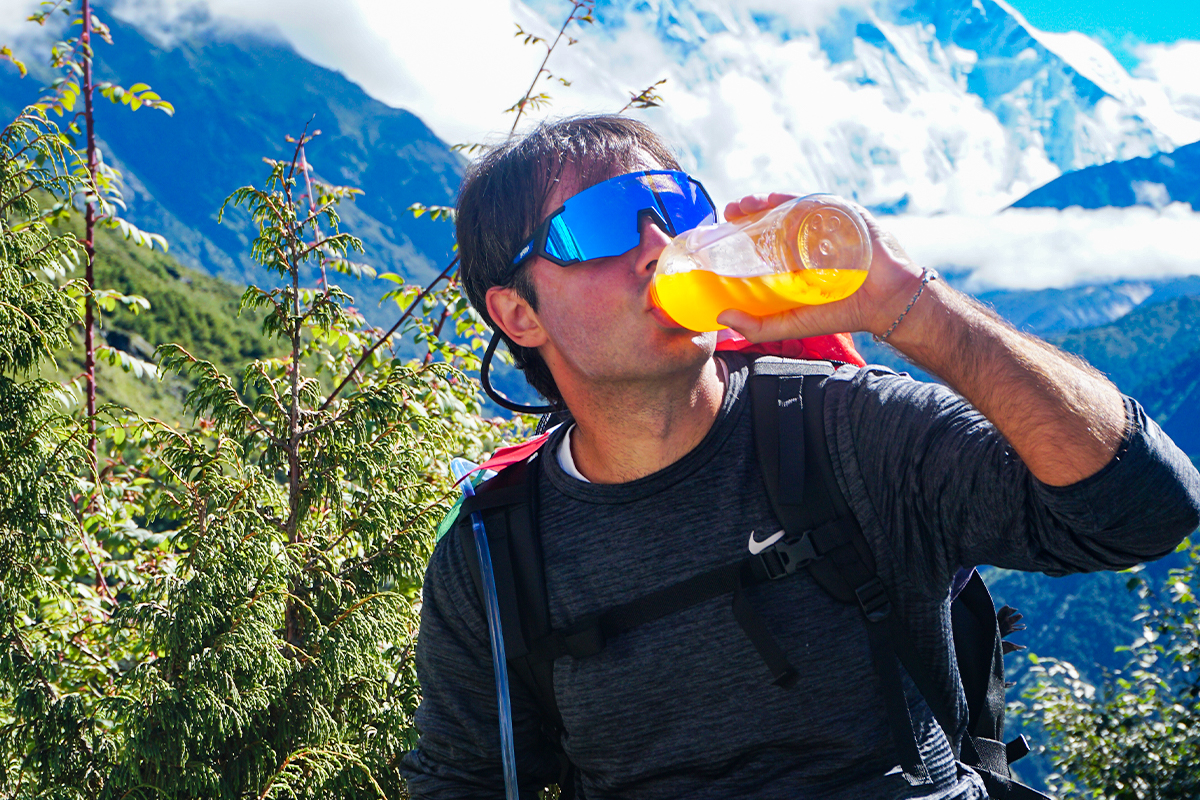
Key Components of Your Training
This program focuses on three pillars:
- Cardiovascular Training: Builds endurance for sustained uphill hiking.
- Strength Training: Enhances leg and core strength for carrying a backpack and navigating uneven terrain.
- Mental Toughness: Prepares you for the mental challenges of altitude and long days on the mountain.
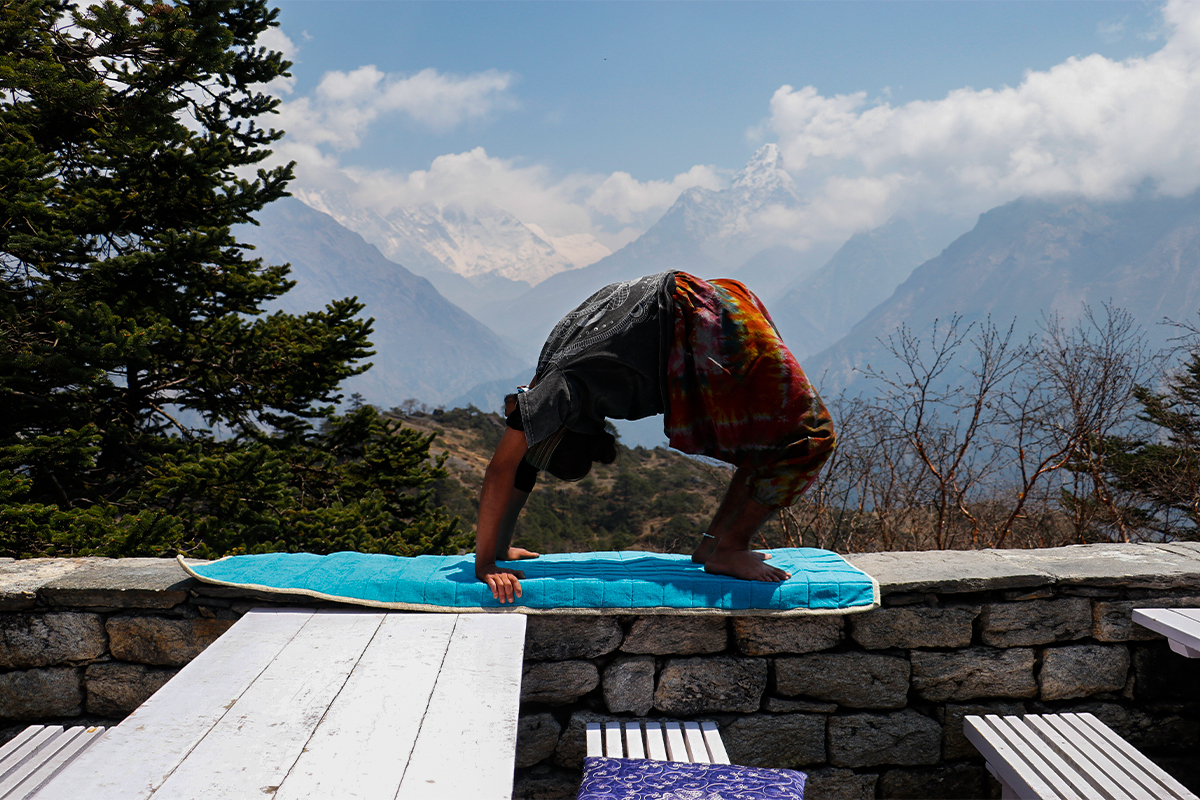
The Training Plan: A Week-by-Week Breakdown
Week 1-4: The Initial Phase
These initial weeks focus on building a solid foundation.
- Cardio: Begin your exercise with moderate-intensity cardio like jogging, cycling, brisk walking, and swimming for 30-45 minutes, three times a week. Gradually increasing the duration by 10-15 minutes each week
- Strength Training: Introduce your body to basic strength training programs to target major muscles like the core, back, legs, and chest with 2-3 sets of 10-12 reps. You can incorporate resistance bands or free weights during squats, lunges, pushups, planks, and rows.
- Hiking: Incorporate hikes into your routine, progressively increasing the distance and elevation gain. This helps your body adapt to a backpack and mimics the climbing experience.

Weeks 5-8: Building endurance
As the base fitness level improves, we will gradually ramp up the hurdle to kick-start your body for the demanding Kilimanjaro routes.
- Cardio: Incorporate interval training with increased cardio duration to 45-60 minutes. To improve cardiovascular efficiency and equip your body for the varied terrain on Kilimanjaro, alternate between brisk jogging and uphill climbing with recovery rests.
- Strength Training: Increase the intensity of your strength workouts by adding weight or resistance, aiming for 3 sets of 10-15 reps. Try and incorporate exercises that mimic trekking movements like step-ups and lunges.
- Hiking: Extend the hikes for 2-3 hours, gradually increasing the elevation gain. Practice hiking with a weighted backpack (10-15 kg) to simulate your weight on the climb.

Weeks 9-11: Peak Training
These few weeks of the training plan demand increasing the intensity and duration of the exercises and hikes altogether.
- Cardio: Continue the long weekend hikes, gradually increasing the weight of your backpack. Consider incorporating stair climbing or hill repeats to simulate the mountain's steep terrain.
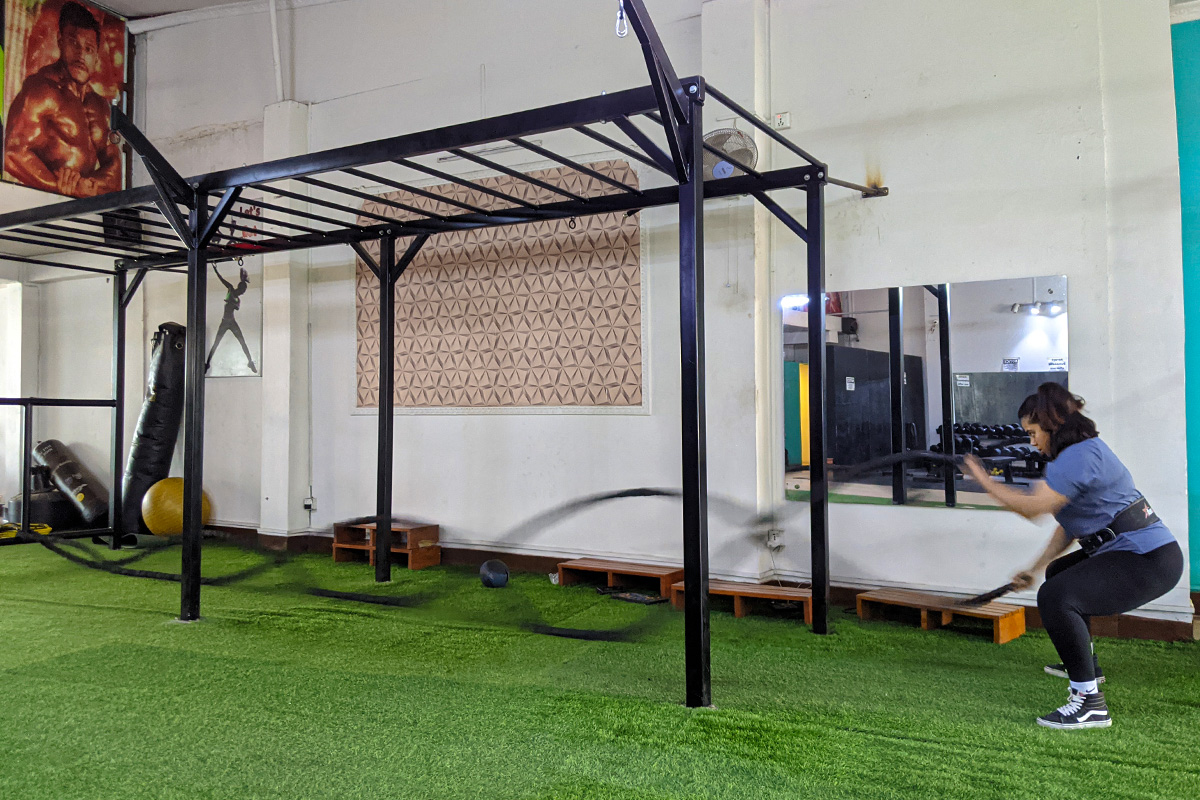
- Strength Training: Continue the strength training routine, focusing on heavier weights and lower repetitions (8-10 reps). Practice exercises with one leg, like single-leg squats and lunges, to improve balance and stability.
Week 12: Recovery and Preparation
During this 12th week of the Kilimanjaro Training Plan, you need to focus on tapering your exercises and reducing the volume by 50%. Letting your body recover from the strenuous training and resting will help you reserve energy for the Kilimanjaro climb. Check all the necessary gear and equipment for the trip. Meditation helps prepare you mentally for conquering the mountain. Practice mindfulness to develop a positive and determined mindset followed by deep breathing exercises to manage altitude sickness.
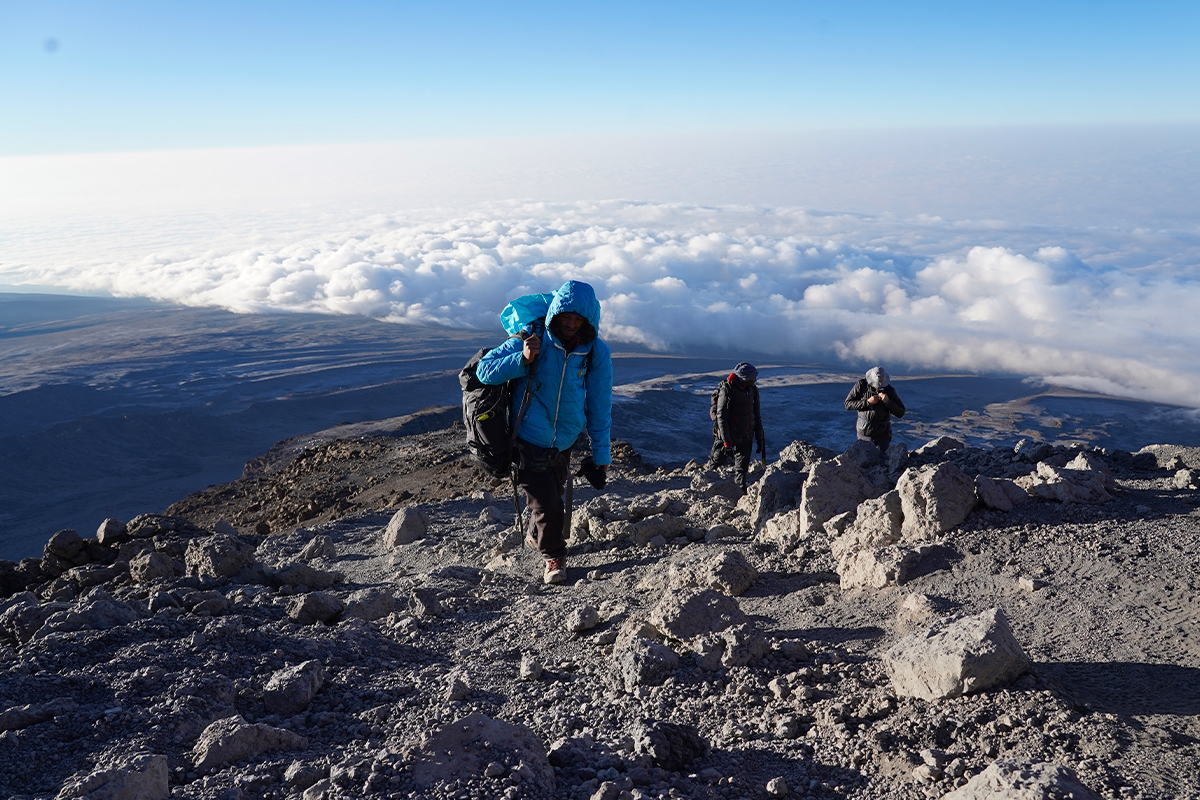
Essential Considerations
This training plan provides a solid framework, it's just one piece of the puzzle. Here are some additional factors to consider:
- Altitude Acclimatization: Kilimanjaro is a high-altitude climb. Consult the agency you are going with regarding the altitude-related queries or simply research your symptoms. While signs and symptoms of altitude sickness are generalized, it may depend on person to person. Always be prepared.
- Gear and Equipment: Invest in sturdy/waterproof hiking boots, clothing appropriate for varying temperatures, and a backpack that fits comfortably.
- Practice Makes Perfect: Practice using your trekking poles and hiking boots on uneven terrain.
- Easy-moderate pace hikes: Practicing short hikes before the actual trek helps accommodate your body going on a higher elevation. Incorporate hikes of a few hours that gradually increase in intensity and duration.
- Best time to climb: The best time to climb Kilimanjaro is during the dry seasons, occurring from late December to early March and from June to October. These periods offer the most stable weather conditions with less precipitation, making for a safer and more enjoyable climbing experience. During this time of the year, the skies are usually clear, providing excellent visibility and stunning views of the surrounding landscapes.
Additional Considerations
- Diet and Hydration: Fuel your body with a balanced diet rich in carbohydrates, protein, and healthy fats. Stay adequately hydrated throughout your training and climb.
- Practice with Gear: Hike with your backpack, boots, and other climbing gear to break them in and ensure proper fit.
- Altitude Acclimatization: Consider doing an altitude acclimatization hike before your Kilimanjaro climb.
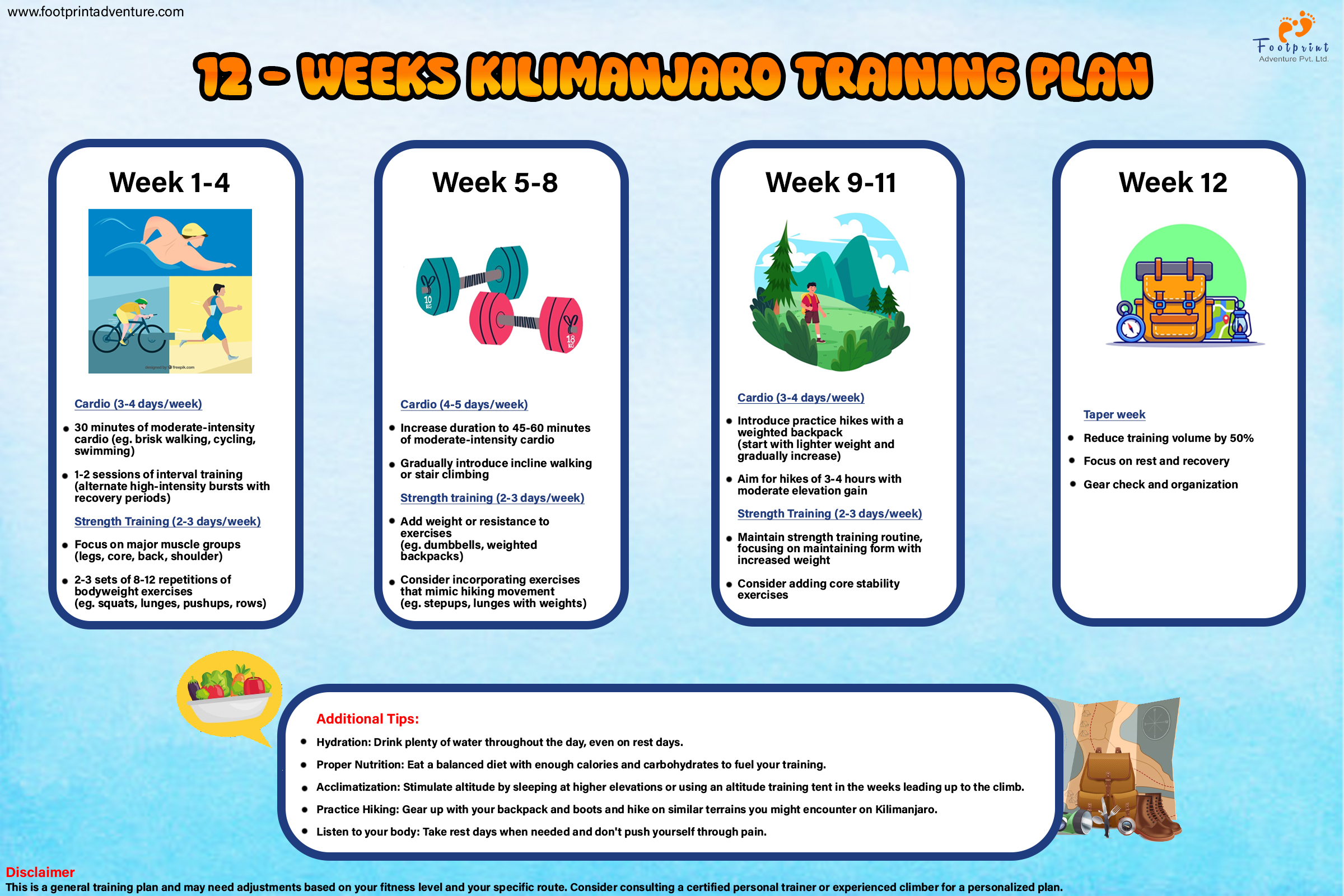
Embrace the Journey: Beyond the Training Plan
Kilimanjaro climbing is a mental and emotional journey rather than just a physical one. This training plan is a great guide to equip you physically but keep in mind that maintaining a positive attitude and practicing mindfulness will assist in building a positive attitude, and a strong team spirit. Remember, the journey itself is a reward, filled with breathtaking scenery, personal growth, and a sense of accomplishment that will stay with you. Embrace the entire process and celebrate your progress for an incredible journey to the “ Roof of Africa”.

*Bonus Tip: Complement your training with yoga or Pilates to improve flexibility, balance, and core strength – all crucial assets on the mountain.*
Disclaimer: This is a general training plan and may need adjustments based on your fitness level and your specific route. Consider consulting a certified personal trainer or experienced climber for a personalized plan.
Salona Dhungana is a dynamic individual who wears multiple hats with effortless grace. As the Operation Head of Footprint Adventure, she brings a unique blend of professionalism, creativity, and compassion. Her journey from a dedicated nurse to a passionate writer and influential leader is an inspiring narrative of growth and versatility.
Salona's educational background as a nurse has deeply built in her a sense of care and empathy. Her experience in the healthcare sector provided her with invaluable skills in teamwork, crisis management, and meticulous organization – qualities that seamlessly transitioned into her role as the Operations Head. Her ability to manage intricate logistical details with a compassionate touch sets her apart in the adventure travel industry.
Beyond her operational skills, Salona's creative personality finds many different ways to express itself. She effortlessly crafts her words and expertise into fascinating blogs. Her love for writing extends beyond the limits with a way of creating a lasting impression.
Salona's vibrant spirit isn't limited to her professional pursuits. Dance, for her, is a form of self-expression – a way to communicate emotions that words sometimes can't capture. Singing is another avenue through which Salona finds inner harmony. It's a reminder that among the hustle and bustle of operations, there's always room for the soothing embrace of her melody.
In the ever-evolving landscape of adventure travel, Salona stands as an example of inspiration, showcasing the profound impact of creativity, compassion, and continuous self-discovery. As a writer, dancer, singer, and Operations Head, she not only defines versatility but also exemplifies the beautiful symphony that can be created when passion meets profession.










